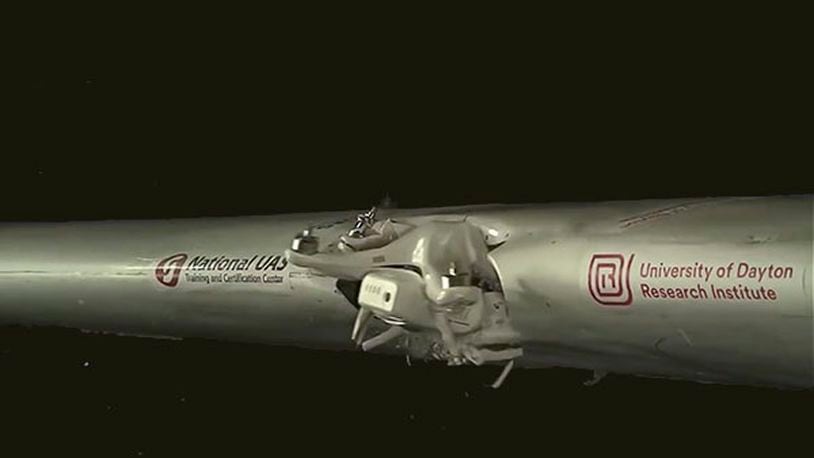The video and the post show a scenario that is “simply inconceivable” in anything like real life, wrote Brendan Schulman, a vice president of policy and legal affairs for DJI Technology Inc.
MORE: Even with new offices coming, CareSource decides to keep space in another downtown building
At the altitudes where such a plane would likely encounter a Phantom drone, the plane would be flying less than half as fast as shown in a UDRI video, 200 mph, Schulman wrote in an open letter to UDRI that has been posted online.
Rather, in the altitudes where such a drone is likely to operate, a Mooney M20 would be taking off or landing at speeds of 70 to 88 knots, or 81 to 101 mph, Schulman wrote.
“Your video and blog post have been promoted in media around the world, yet nowhere in any of your print or television appearances have you qualified the limited and unrealistic nature of your test,” he wrote.
In the Sept. 13 blog and video post titled "Risk in the Sky," UDRI says that tests it has performed "show that bigger may not always be better in contests between manned aircraft and even small UAVs (unmanned aerial vehicles)."
In the post, UDRI writes of a “test designed to mimic a midair collision of a drone and a commercial transport aircraft.” The idea was to test damage resulting from a collision at a speed of 238 miles per hour, the post said.
“Researchers in UDRI’s Impact Physics group launched a 2.1-pound DJI Phantom 2 quadcopter at the wing of a Mooney M20 aircraft,” UDRI’s post said. “The drone did not shatter on impact, but tore open the leading edge of the wing as it bore into the structure, damaging its main spar.”
MORE: Ohio hits employment record as consumers continue to spend
“While the quadcopter (drone) broke apart, its energy and mass hung together to create significant damage to the wing,” the post quoted Kevin Poormon, UDRI group leader for impact physics, as saying.
The post paraphrases Poormon as saying the test was intended to compare “a bird strike and a drone strike, using a drone similar in weight to many hobby drones and a wing selected to represent a leading edge structure of a commercial transport aircraft.”
DJI takes issue with the scenario UDRI presents. Schulman charges UDRI with creating an “incendiary” blog post that seems designed “to generate paid research work for UDRI at the expense of the reputation of drone technology broadly and DJI’s products specifically.
“Nobody can imagine a scenario in which one of our drones would be going full-speed in colliding straight into the wing of a small, four-seat aircraft that is going at its maximum possible velocity,” Adam Lisberg, a North American communications director for Shenzhen, China-based DJI Technology, said in a phone interview Monday.
In an initial interview, Lisberg said that as of about 3 p.m, Monday DJI had received no response from either the university or UDRI. At about 3:30 p.m. however, UDRI released a statement saying there are currently no FAA defined collision test parameters for drone strike testing.
MORE: Turning Air Force innovations into opportunities
“We plan to perform additional tests using varying drone weights and different structures as targets, and we would welcome the opportunity to partner with members of the manned and unmanned aviation communities in future testing,” UDRI said in its response to DJI.
In response to that, Lisberg said UDRI’s work still leaves a false impression of the risks drone flights create.
“What this video shows, is that if you take the wing of a small airplane and fire something at it at hundreds of miles an hour, you will damage it,” Lisberg said. “I could have told you that.”
Messages were also sent to Schulman. And a message seeking comment was left with Andrew Shepherd, executive director and chief scientist with Sinclair Community College’s Unmanned Aerial Systems program.
Shepherd is named and quoted in UDRI’s blog post.
MORE: Downtown Dayton’s ‘PNC building’ lands two big tenants
“This type of testing shows that we recognized the potential risks and are seeking to better understand them and positively influence policy and operations to mitigate possible dangers,” Shepherd said in the post. “Collaborating with UDRI’s leading experts and world-class testing facilities helps us fulfill our mission to not only advance technologies for unmanned aerial systems, but to make the skies safer for manned and unmanned vehicles alike.”
MORE: Report: Defense spending could boost Dayton office market
About the Author
